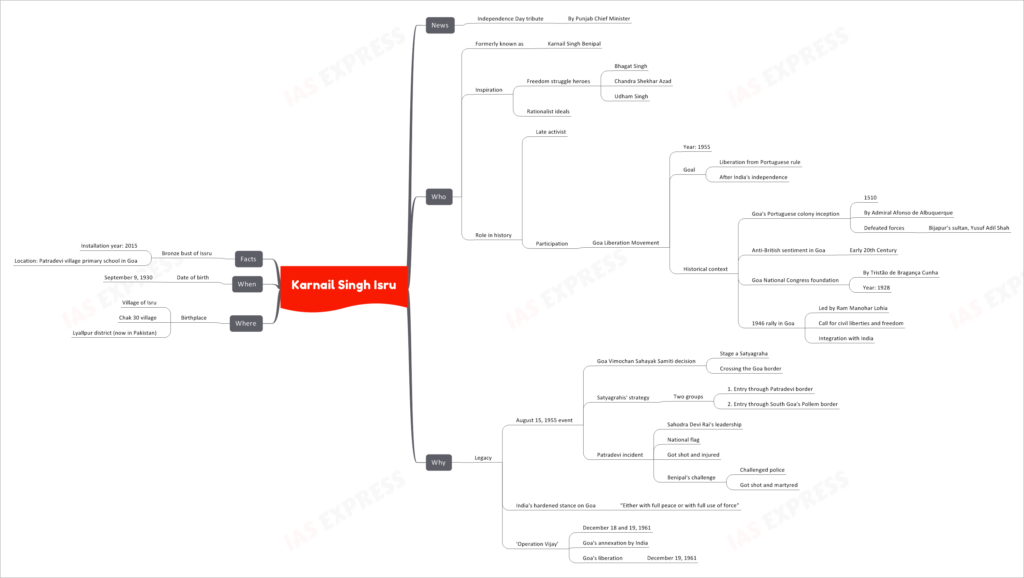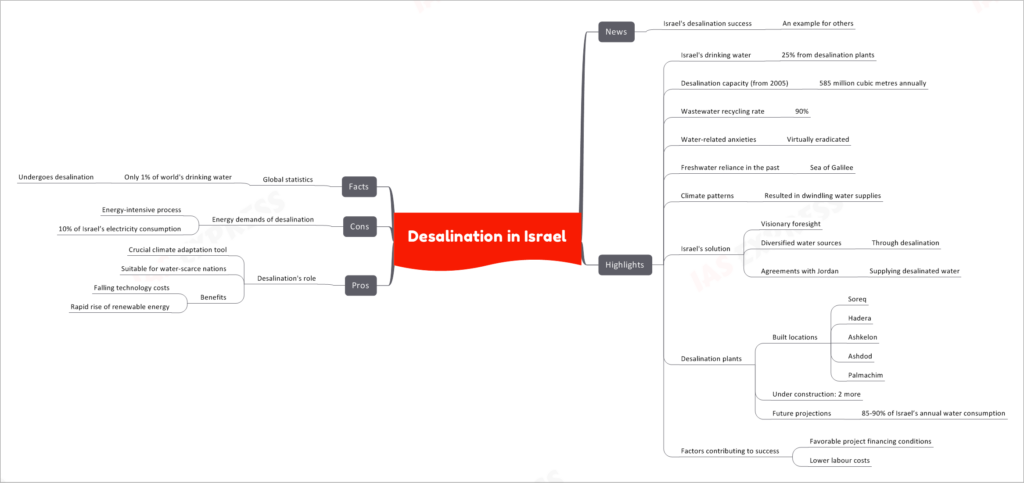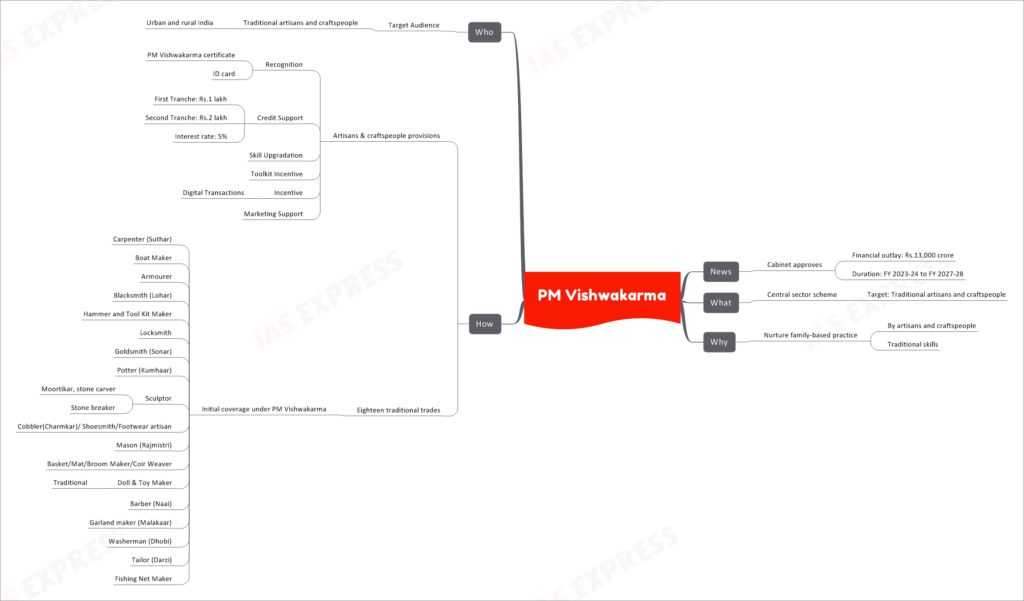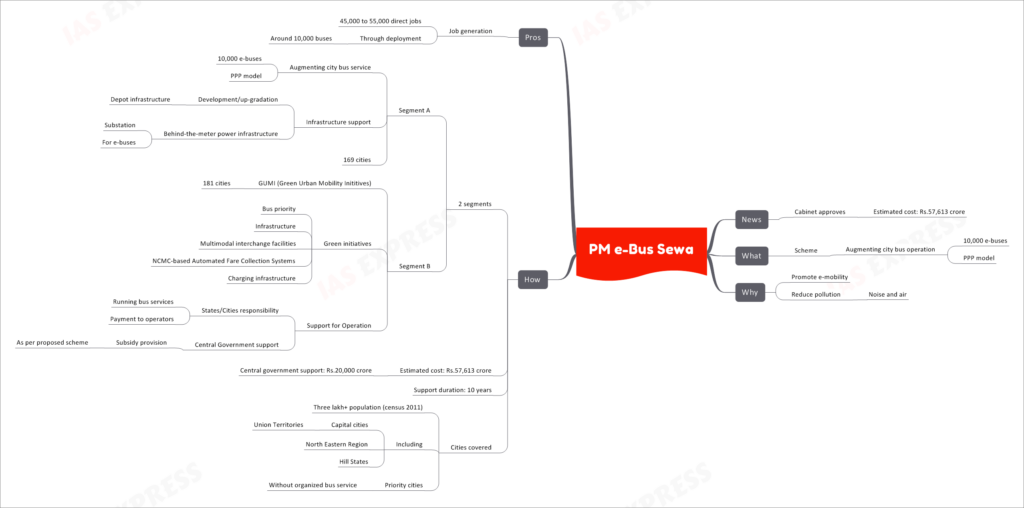[Newsbits] 16.08.2023

Prafulla Mishra Panel
The University Grants Commission (UGC) has taken a significant step in the realm of academia by establishing the Prafulla Mishra Panel. This esteemed panel, led by Prafulla Mishra, a former Director of the National Mission for Manuscripts (NMM), is tasked with the development of model syllabi for subjects of Manuscriptology and Paleography.
The Mission of the Prafulla Mishra Panel
Crafting Model Syllabi
The primary objective of the Prafulla Mishra Panel is to develop model syllabi for two vital subjects: Manuscriptology and Paleography. These subjects explore the profound history and literature preserved through handwritten documents and ancient writing systems, respectively.
Subjects of Focus: Manuscriptology and Paleography
- Manuscriptology: This field involves the study of history and literature through handwritten documents. It delves into the fascinating world of manuscripts, uncovering layers of knowledge and cultural heritage.
- Paleography: Also known as Palaeography, this discipline specializes in the study of ancient writing systems, particularly those from classical and medieval eras. It offers insights into the evolution of scripts and the preservation of historical records.
The Structure and Composition of the Panel
The Prafulla Mishra Panel comprises 11 members, each bringing their expertise to the table. This diverse composition ensures a comprehensive and well-rounded approach to developing model syllabi that align with modern academic requirements.
The Significance and Approach
Standardization for Academic Excellence
The establishment of model syllabi for Manuscriptology and Paleography serves the purpose of standardization. These syllabi will lay the foundation for postgraduate diploma courses in these subjects, ensuring a high level of academic excellence and consistency across institutions.
Methodology and Course Offerings
The Prafulla Mishra Panel will meticulously design model syllabi, making them suitable for specialized students pursuing in-depth studies in Manuscriptology and Paleography. Additionally, these syllabi will be offered as open electives to students in other academic branches, promoting interdisciplinary understanding.
The Visionary Leadership of Prafulla Mishra
The Establishment and Leadership
The Prafulla Mishra Panel has been established by the University Grants Commission, with leadership provided by Prafulla Mishra himself. Prafulla Mishra's distinguished background as the former Director of the National Mission for Manuscripts (NMM) positions him well to guide this initiative.
Fascinating Manuscript Statistics
A Wealth of Manuscripts
The National Mission for Manuscripts has documented a staggering total of 10 million manuscripts, composed in a rich variety of ancient scripts.
Script Diversity and Materials
These manuscripts are written in approximately 80 ancient scripts and encompass a spectrum of materials, including palm leaves, paper, cloth, and bark.
Language Distribution
Language-wise, these manuscripts are a testament to India's linguistic diversity. Sanskrit comprises 75% of the collection, while regional languages account for the remaining 25%.
Karnail Singh Isru
On the occasion of Independence Day, the Chief Minister of Punjab paid a heartfelt tribute to a valiant freedom fighter, Karnail Singh Isru. His unwavering dedication to the ideals of freedom and his pivotal role in the Goa Liberation Movement stand as a testament to his indomitable spirit and commitment to the nation.
The Journey of Karnail Singh Isru
A Former Name and Inspirations
Born as Karnail Singh Benipal, he drew inspiration from iconic freedom struggle heroes like Bhagat Singh, Chandra Shekhar Azad, and Udham Singh. Driven by their sacrifices and rationalist ideals, Isru embarked on a journey to contribute to India's fight for freedom.
Role in History: A Glimpse into His Activism
Karnail Singh Isru was an activist who actively participated in the Goa Liberation Movement in the year 1955. This movement sought to liberate Goa from Portuguese rule, following India's independence. This historical initiative was rooted in the longstanding anti-British sentiment in Goa and the efforts of the Goa National Congress, founded by Tristão de Bragança Cunha in 1928.
The Pivotal Event and Legacy
August 15, 1955: A Defining Moment
Karnail Singh Isru's legacy is deeply entwined with the events of August 15, 1955. The Goa Vimochan Sahayak Samiti, led by him, made a momentous decision to stage a Satyagraha and cross the Goa border. This act of courage was marked by the strategic entry of two groups: one through Patradevi border and the other through South Goa's Pollem border.
The Sacrifice for Freedom
Tragedy struck during the Patradevi incident, where Sahodra Devi Rai, under Isru's leadership, carried the national flag. In the face of adversity, she was shot and injured. It was here that Karnail Singh Isru rose to the challenge, confronting the police fearlessly. Tragically, he was shot and martyred, leaving behind a legacy of unwavering dedication to the cause of freedom.
India's Determination and Goa's Liberation
Karnail Singh Isru's sacrifice and India's unyielding stance on Goa bore fruit. India's message to Goa was clear: "Either with full peace or with full use of force." The historic "Operation Vijay" in December 1961 led to the annexation of Goa by India, marking the liberation of Goa from Portuguese rule on December 19, 1961.
A Glimpse into Isru's Roots and Birthplace
Birthplace and Date of Birth
Karnail Singh Isru was born on September 9, 1930, in the village of Isru, located in the Chak 30 village of the Lyallpur district (now in Pakistan).
Honoring Isru's Memory
Bronze Bust and Tribute
In recognition of his immense contribution, a bronze bust of Karnail Singh Isru was installed in 2015. This commemorative statue stands at the Patradevi village primary school in Goa, a symbol of his enduring legacy and the sacrifice he made for the nation's freedom.
Desalination in Israel
Israel's remarkable success in desalination has positioned it as a global example, demonstrating the transformative potential of this technology in addressing water scarcity and ensuring sustainable water resources. Israel's strategic approach to water management through desalination stands as a model for other nations facing similar challenges.
Israel's Desalination Success: A Blueprint for Others
Achieving Water Security
Israel's journey towards water security has been anchored by its innovative approach to desalination. Approximately 25% of the nation's drinking water is now sourced from desalination plants, a remarkable feat that serves as an inspiring example for other water-scarce regions.
Desalination Capacity and Wastewater Recycling
Since 2005, Israel has built a desalination capacity of 585 million cubic meters annually, reducing its reliance on freshwater sources like the Sea of Galilee. Moreover, the nation's wastewater recycling rate has reached an impressive 90%, underscoring its commitment to sustainable water management.
Addressing Water-Related Anxieties
Israel's past reliance on freshwater sources, coupled with changing climate patterns that led to dwindling water supplies, created significant water-related anxieties. However, Israel's visionary foresight in diversifying its water sources through desalination has virtually eradicated these concerns.
Israel's Desalination Journey: From Vision to Reality
Strategic Diversification and International Agreements
In response to water scarcity challenges, Israel pursued a strategic approach to diversify its water sources through desalination. Additionally, the nation entered agreements with Jordan, supplying desalinated water and fostering regional cooperation.
Desalination Plant Network
Israel's desalination efforts are embodied in its network of desalination plants, including locations such as Soreq, Hadera, Ashkelon, Ashdod, and Palmachim. With two more plants under construction, Israel's visionary approach is projected to meet 85-90% of its annual water consumption.
Factors Fueling Israel's Desalination Success
Favorable Conditions and Project Financing
Israel's desalination achievements are attributed, in part, to favorable project financing conditions and relatively lower labor costs, fostering a conducive environment for the implementation of these initiatives.
The Pros and Cons of Desalination
Crucial Climate Adaptation Tool
Desalination serves as a crucial tool for climate adaptation, offering a viable solution for water-scarce nations. Falling technology costs and the rapid rise of renewable energy further enhance the benefits of this approach.
Energy Intensity and Challenges
Despite its advantages, desalination is energy-intensive, consuming approximately 10% of Israel's electricity. Balancing the energy demands of desalination with sustainability remains a challenge.
Facts and Global Context
Desalination on a Global Scale
Globally, only 1% of the world's drinking water undergoes desalination, highlighting the vast untapped potential of this technology in addressing water scarcity challenges.
PM Vishwakarma
In a significant move, the Cabinet has approved the implementation of the PM Vishwakarma scheme, a central sector initiative aimed at supporting and empowering traditional artisans and craftspeople. With a financial outlay of Rs. 13,000 crore for the duration of FY 2023-24 to FY 2027-28, this visionary scheme is set to breathe new life into traditional family-based practices and skills.
PM Vishwakarma: Reviving Traditional Artistry
Unveiling the Scheme
The PM Vishwakarma scheme is a central sector scheme with a comprehensive vision to bolster traditional art forms and skills practiced by artisans and craftspeople across India. This scheme recognizes the invaluable contribution of these artisans in preserving cultural heritage and promoting creativity through generations.
Empowering Artisans: The Why and How
Preserving Traditional Family-Based Practices
At its core, the PM Vishwakarma scheme is designed to nurture and strengthen family-based practices of artisans and craftspeople. It acknowledges that these traditions are passed down through generations and play a pivotal role in sustaining the rich cultural fabric of the country.
Provisions for Artisans and Craftspeople
To achieve its goals, the PM Vishwakarma scheme offers a range of provisions to support and uplift traditional artisans and craftspeople:
- Recognition: Artisans and craftspeople will receive a PM Vishwakarma certificate and an ID card, acknowledging their role in preserving traditional skills.
- Credit Support: The scheme provides credit support to artisans in two tranches – the first tranche of Rs. 1 lakh and the second tranche of Rs. 2 lakh. The interest rate on this credit support is a mere 5%, making it accessible and affordable for artisans.
- Skill Upgradation: The scheme emphasizes skill upgradation, enabling artisans to enhance their abilities and stay relevant in a changing market.
- Toolkit Incentive: Artisans will receive incentives for acquiring and maintaining toolkits, helping them perform their craft with efficiency and excellence.
- Incentives for Digital Transactions: Incentives for adopting digital transaction methods further modernize artisans' operations and ease financial transactions.
- Marketing Support: Recognizing the importance of market reach, the scheme extends marketing support to connect artisans with wider audiences.
Traditional Trades Covered: A Journey through 18 Artistic Disciplines
The PM Vishwakarma scheme initially focuses on empowering artisans in 18 traditional trades, each of which holds unique significance in India's cultural landscape:
- Carpenter (Suthar)
- Boat Maker
- Armourer
- Blacksmith (Lohar)
- Hammer and Tool Kit Maker
- Locksmith
- Goldsmith (Sonar)
- Potter (Kumhaar)
- Sculptor (Moortikar, stone carver; Stone breaker)
- Cobbler (Charmkar) / Shoesmith / Footwear Artisan
- Mason (Rajmistri)
- Basket / Mat / Broom Maker / Coir Weaver
- Doll & Toy Maker (Traditional)
- Barber (Naai)
- Garland Maker (Malakaar)
- Washerman (Dhobi)
- Tailor (Darzi)
- Fishing Net Maker
Target Audience: Empowering Artisans Across Urban and Rural India
The primary beneficiaries of the PM Vishwakarma scheme are traditional artisans and craftspeople across urban and rural India. This inclusive approach aims to uplift artisans from various backgrounds and regions, promoting a diverse and vibrant array of traditional artistry.
PM e-Bus Sewa
The Cabinet has approved the PM e-Bus Sewa scheme with an estimated cost of Rs. 57,613 crore. This visionary initiative is aimed at revolutionizing urban mobility in India by augmenting city bus operations with a fleet of 10,000 electric buses (e-buses).
PM e-Bus Sewa: A Green Revolution in Urban Mobility
Unveiling the Scheme
The PM e-Bus Sewa scheme, approved by the Cabinet, is a transformative initiative designed to enhance city bus operations across India. Under this scheme, the goal is to introduce 10,000 e-buses into the public transportation system, following a Public-Private Partnership (PPP) model. This move aligns with the broader vision of promoting electric mobility and reducing pollution levels, both in terms of noise and air quality.
Driving Forces: Why Embrace E-Mobility?
The core motivations behind the PM e-Bus Sewa scheme are twofold: promoting electric mobility and mitigating environmental pollution. By introducing a substantial number of e-buses, the scheme aims to reduce the carbon footprint of urban transportation and contribute to cleaner air and quieter streets.
Implementation Strategy: The Two Distinct Segments
The implementation of the PM e-Bus Sewa scheme is divided into two key segments, each addressing different aspects of urban mobility enhancement.
Segment A: E-Bus Augmentation and Infrastructure
In this segment, the primary focus is on enhancing city bus services by deploying 10,000 e-buses through the PPP model. To facilitate this, comprehensive infrastructure support is provided, including the development and upgrading of depot infrastructure. Additionally, behind-the-meter power infrastructure, such as substations dedicated to e-buses, is set up to ensure efficient and uninterrupted charging.
The scope of this segment spans 169 cities, envisioning a holistic transformation in urban transportation.
Segment B: Green Urban Mobility Initiatives (GUMI)
This segment, known as GUMI, targets 181 cities and emphasizes holistic green initiatives in urban mobility. The initiatives include:
- Implementing bus priority lanes to streamline traffic flow.
- Developing infrastructure for multimodal interchange facilities to enable seamless transfers between different modes of transport.
- Introducing the National Common Mobility Card (NCMC)-based Automated Fare Collection Systems for a hassle-free payment experience.
- Establishing charging infrastructure to support the e-bus fleet.
Financial and Operational Support: Collaborative Efforts
The PM e-Bus Sewa scheme follows a collaborative approach between states, cities, and the Central Government to ensure its successful implementation and operation.
- States/Cities Responsibility: States and cities are responsible for running bus services and making payments to operators.
- Central Government Support: The Central Government extends its support through a subsidy provision, as per the proposed scheme. An estimated Rs. 20,000 crore will be allocated from the Central Government to facilitate the scheme's execution over a duration of 10 years.
Coverage and Prospects: A Glimpse into the Future
The PM e-Bus Sewa scheme aims to cover cities with a population of over three lakhs, as per the 2011 census. This includes capital cities, Union Territories, the North Eastern Region, and hill states. Additionally, priority will be given to cities without organized bus services, ensuring a comprehensive and inclusive reach.
Promising Job Generation
One of the most significant advantages of the PM e-Bus Sewa scheme is the potential for job generation. With the deployment of around 10,000 e-buses, the scheme is expected to create direct employment opportunities ranging from 45,000 to 55,000 jobs. This infusion of employment opportunities can significantly contribute to economic growth and social welfare.
Navroz
Navroz 2023 has been joyfully celebrated by the Parsi community, marking the beginning of their New Year. This age-old festival holds deep cultural and historical significance and is observed in various countries with Persian cultural influence.
Parsi New Year: A Glimpse into Navroz
Navroz, also known as the Parsi New Year, is a festival that signifies the onset of a new year according to the Zoroastrian calendar. It is an occasion of great importance for the Parsi community, carrying with it a rich history and cultural heritage that spans over three millennia. This festival is not only celebrated by Parsis but also by various communities that share the Persian cultural legacy.
The Significance of Navroz
Navroz is a festival steeped in history, dating back 3000 years. Its cultural importance is so profound that it has been recognized as a UNESCO Intangible Cultural Heritage of Humanity. This recognition speaks to the festival's enduring value and its significance in preserving cultural traditions for future generations.
Origins and Legends: Tracing Back to the Persian King Jamshid
The origins of Navroz are intertwined with the legendary figure of Jamshid, a Persian king from mythology. According to ancient texts, Jamshid's reign was characterized by prosperity, justice, and enlightenment. His legacy is closely linked with the concept of renewal and rebirth, aligning perfectly with the themes of the New Year celebration.
The Geographic Spread: Navroz Around the World
Navroz is celebrated in several countries, primarily those that have been influenced by Persian culture. Some of these countries include India, Iran, Iraq, Afghanistan, and parts of Central Asia. In each of these regions, Navroz is commemorated with unique customs, rituals, and festivities, highlighting the diverse ways in which this festival is cherished.
Navroz: The Timing and Observance
The Date of Navroz
Navroz is celebrated on the first day of Farvardin, the first month in the Zoroastrian calendar. This date coincides with the time of the vernal equinox, which typically falls on March 21st. This astronomical alignment is symbolic of the balance between light and darkness, a concept that resonates deeply with the themes of renewal and hope.
Navroz in India: A Different Calendar
For the Parsi community in India, the celebration of Navroz occurs nearly 200 days after the Persian New Year. This variance is due to the use of the Shahenshahi calendar in India, which adjusts the date of Navroz to align with the Indian context. As a result, Navroz in India, known as Nowruz, is observed in either July or August.
Navroz 2023: A Joyous Celebration
In the year 2023, the Parsi New Year, or Navroz, is celebrated on August 16th. This day holds immense significance for the Parsi community and those who appreciate the cultural richness of Persian heritage. The festive spirit, traditional rituals, and gatherings during Navroz reflect the enduring bond that individuals and communities share with their history and cultural roots.






